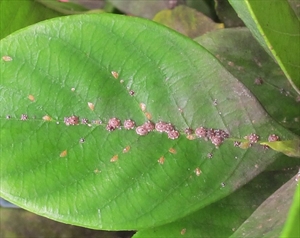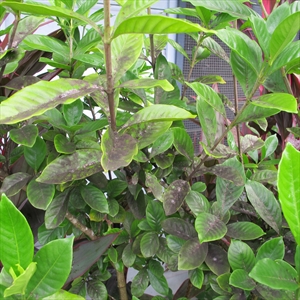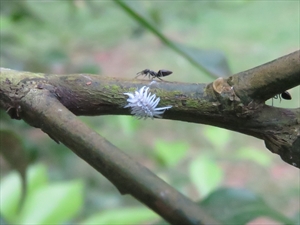- Worldwide distribution. In tropics and sub-tropics. Common on about 80 plant families, particularly fruit and forest trees, and herbaceous ornamentals, but also ferns, orchids and palms. Citrus and mango are the main hosts. An important pest.
- Eggs laid under females. “Crawlers” disperse, settle - often along midribs - moult and feed on sap, with excess expelled as honeydew. Damage by feeding and by sooty moulds growing on honeydew excreta and blackening leaves.
- Natural enemies: parasitoid wasps, but ants interfere with control by wasps and ladybeetles.
- Spread by crawlers on wind, and in the nursery trade.
- Cultural control: check nursery plants are free of scales; prune infested branches; destroy ants (hot water).
- Chemical control: soap, white or horticultural oils; or synthetic pyrethroids for ant control.







